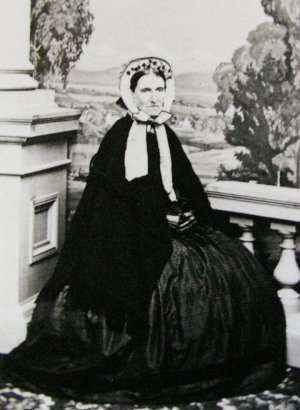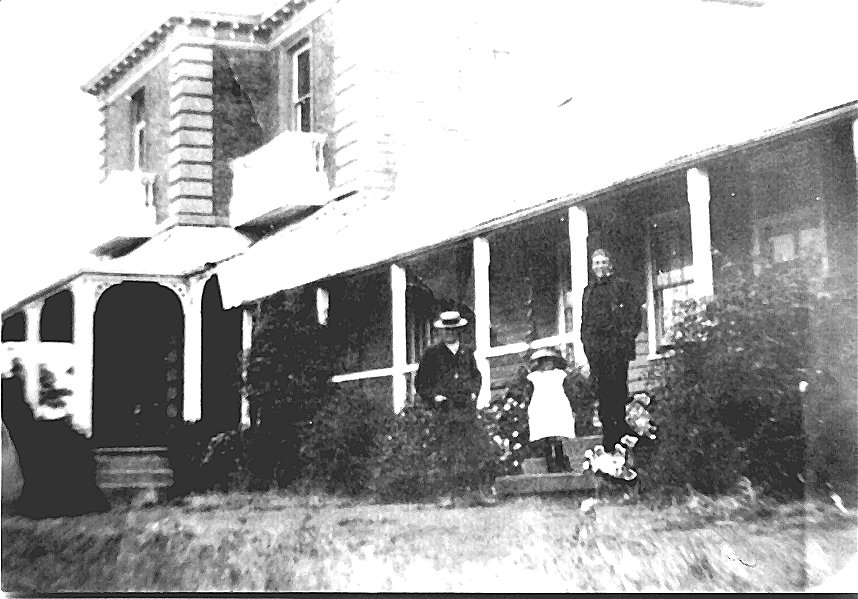|
Archibald Thompson
71/75 RLH
Mr. Thompson, a native of Edinburgh,
arrived in Van Diemens Land on March 1st, 1822 per "Castle Forbe" from
Leith. (H.T.G 2.3.22 CS0 1/91/2080).
Archibald Thompson was born in 1795 and died in 1865, at Cormiston.
He was appointed a Justice of the Peace on October 19th 1837 and was also
a merchant in Launceston in partnership with R Ralston. His original grant
was at Broadmarsh, he acquired Cormiston by purchase.
(H.T.G 20th October 1837 p.1037).
In the Hobart Town Courier of the 7th January 1829, two notices appeared
referring to Thompson and Ralston's business and requesting that all debts
be paid; the other notice was by the two new owners, Read and Duncan, to
announce that they ha taken over the premises of Thompson and Ralston.
"Married at Launceston, on Sunday last, by
the Reverend James Norman, Mr. Archibald Thompson to Agnes, second
daughter or R. Ralston, Esq." Agnes' death was at Cormiston 20th
January 1868 (Wayne Index). Xerox copies of material relating to
Thompson's applications for Land Grants in Van Diemens Land
(C.S.O. 1/912080 L.S.O 1/111/43)
The following is a report about his
properties which he gave in support of his claim for another grant
(L.S.O 1/111/44).
"On my arrival in this country, I received
from His Honour Col. Sorell, a grant of 700 acres, which I located at
Broadmarsh, and resided there for twelve months during which time I
cleared and fenced 40 acres of ground, and built a house. Afterwards
finding the distance from HobartTown too great for a cultivating farm (25
miles of bad road) and the land being quite unfit for sheep, I exchanged
with Mr. Stodart for his grant of 700 acres on the Macquarie River and
commenced sheep farming. I resided on the Macquarie two years until my
stock increased to 800 head (much too great a number for a small grant).
The land all around me was located and I was compelled to put my stock out
on thirds. I sold my land on the Macquarie and applied the proceeds in
part payment for the land whereon I now reside and I can show an
additional capital of (£5,000
remittance from assets held in Edinburgh) all of which I am desirous of
expending in improving other lands as a provision for my children. I also
state the severe loss I have lately sustained by Bevan and his party and
trust the improvements I have made will convince His Excellency that I
have not been an indolent settler."
In July 1824 Archibald Thompson's brother
John arrived in the Colony per "Prince Regent". Archibald applied for a
grant of 500 acres on his brother's behalf, but John died in December
1824. Archibald then applied to have this grant transferred to himself,
but Governor Arthur refused as no improvements had been made on the land.
However, in 1828 he was given this land because of the extensive
improvements on his property. (C.S.O./1/912080,
C.S.O. 1/91/2070).
In the Launceston "Advertiser" of 26th May
1831, a notice appeared of Thompson's intentions to leave the Colony,
requesting all bills in his name to be settled either with him or his
agent, Mr. Gleadow.
The following reference refers to
"Cormiston".
TO BE LET
H.C.T. 21st April 1832 p. 12.
"All that desirable (sic) farm called
Cormiston, situated on the bank of the West Tamar within 4 miles of
Launceston, consisting of 2,000 acres of excellent land, about 300 acres
of which are at present in a high state of cultivation, there are four
paddocks of 100 acres each, and almost the whole is fenced in and a
sufficient quantity of stuff split for completing the outside line, also a
garden and orchard of about 5 acres, well stocked with fruit trees, 25
working bullocks and farming implements of every description, 150 head of
cattle and 40 cows broke in to milk, a dwelling house consisting of eight
rooms with detached kitchen, servants rooms, wash house, dairy and stables
all in thorough repair, also an excellent barn, granary and a house for
farm servants. The tenant can have the whole of the furniture at present
in the house (which is in the very best description) at valuation."
Thompson departed with his wife and
daughter for Edinburgh in May 1832, the property was leased to William
Henty. He intended to settle his affairs in Edinburgh and return. He
returned to Van Diemens Land per the "Lochiel" arriving back on the 1st
April 1835 with his wife and two daughters Marian and Eliza
(C.S.O 67 1/1F014).
His only son John was born at Cormiston in 1836.
The marriage notice for Elizabeth Thompson
appeared in the Hobart Town Courier 10th April 1852, "On the 6th instant,
in St. John's Church, Launceston by the Reverend W.H. Browne L.L.O., The
Rev. Thomas Campbell Ewing, incumbent of Pitt Town in the diocese of
Sydney Australia, to Elizabeth youngest daughter of Archibald Thompson Esq,
J.P. Cormiston, West Tamar."
(Wayne Index) On the 9th September 1856 at
"Cormiston House" by the Rev. W.H. Browne L.L.O. John Manifold eldest son
of William Manifold, "Purrembeet" Victoria, to Marion eldest daughter of
Archibald Thompson J.P. Cormiston, West Tamar.
His only son John, married Catherine,
eldest daughter of James Amos Denham on 3rd June 1858.
One other brother James (M.A. Edinburgh)
arrived in 1835, but it is not clear if he came with Archibald. He did not
stay long in Tasmania and returned to Scotland in 1839. |
 Agnes Ralston
Agnes Ralston